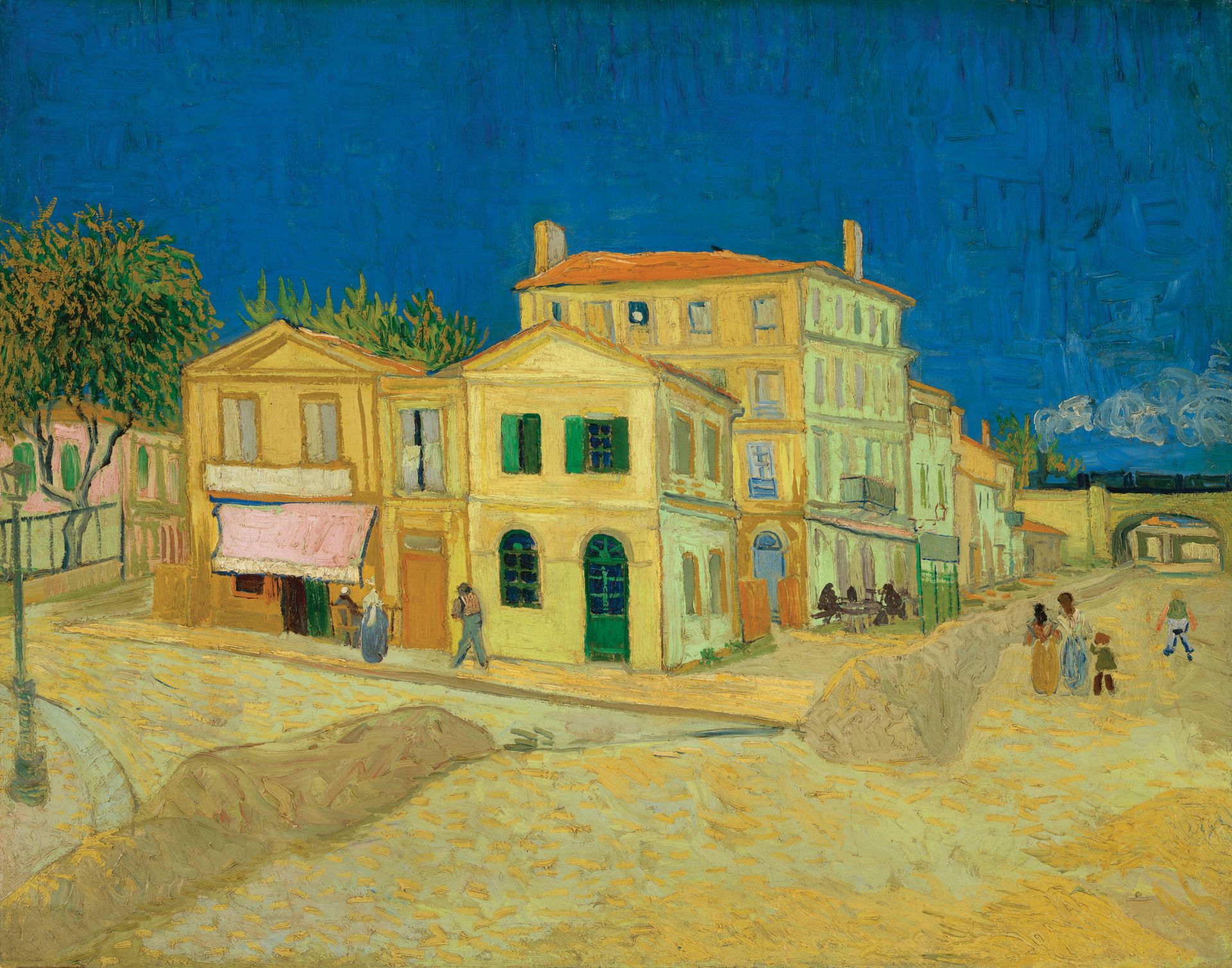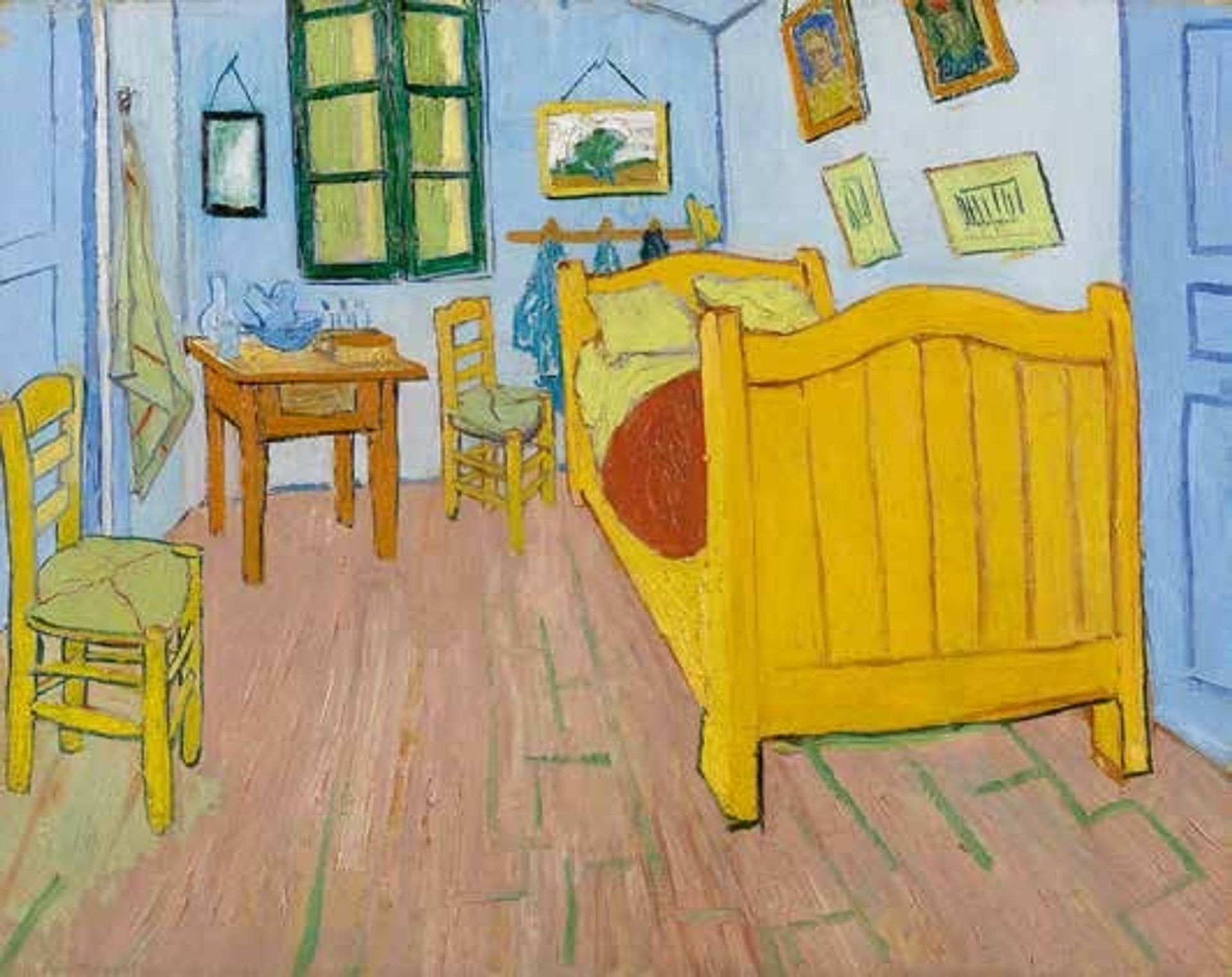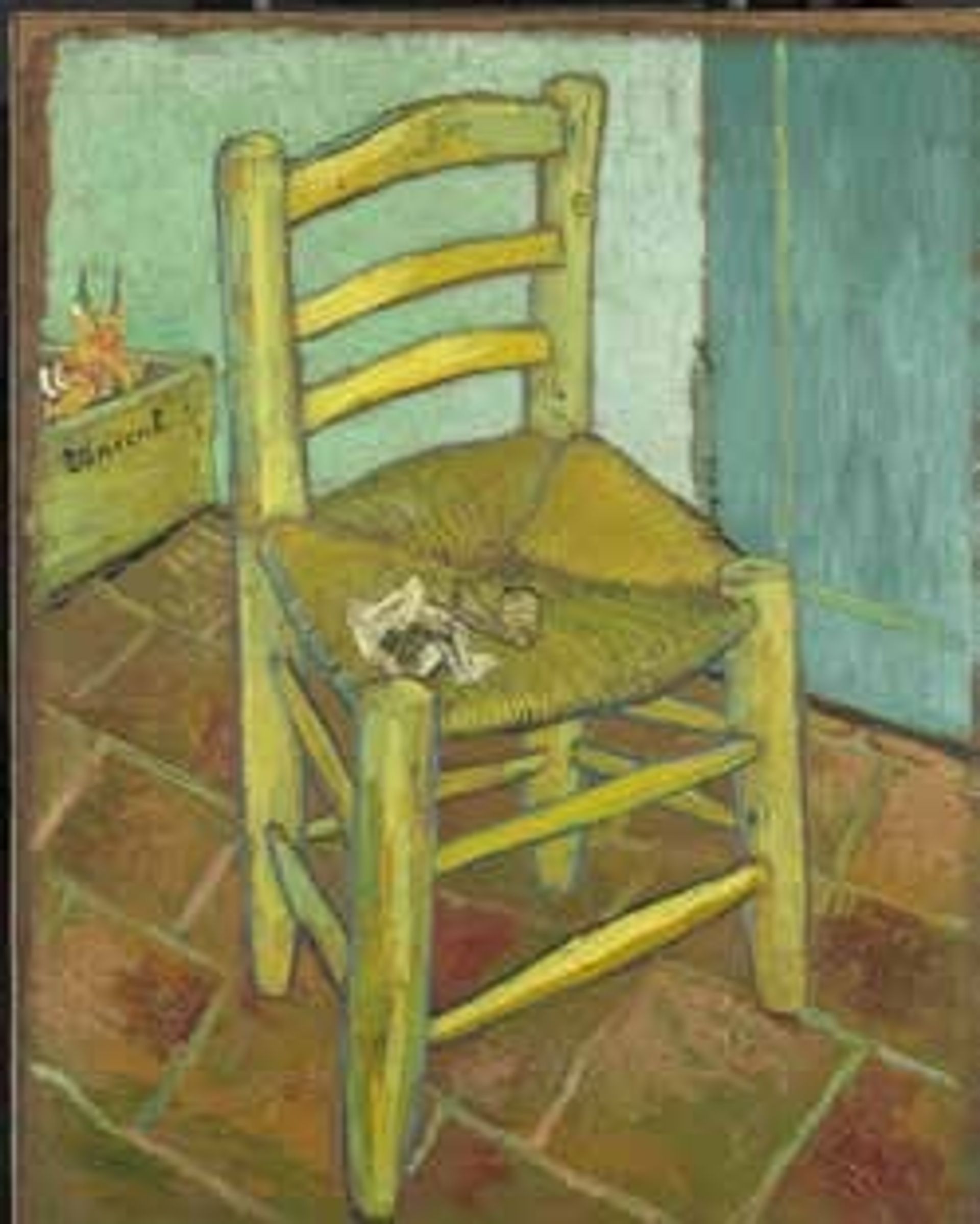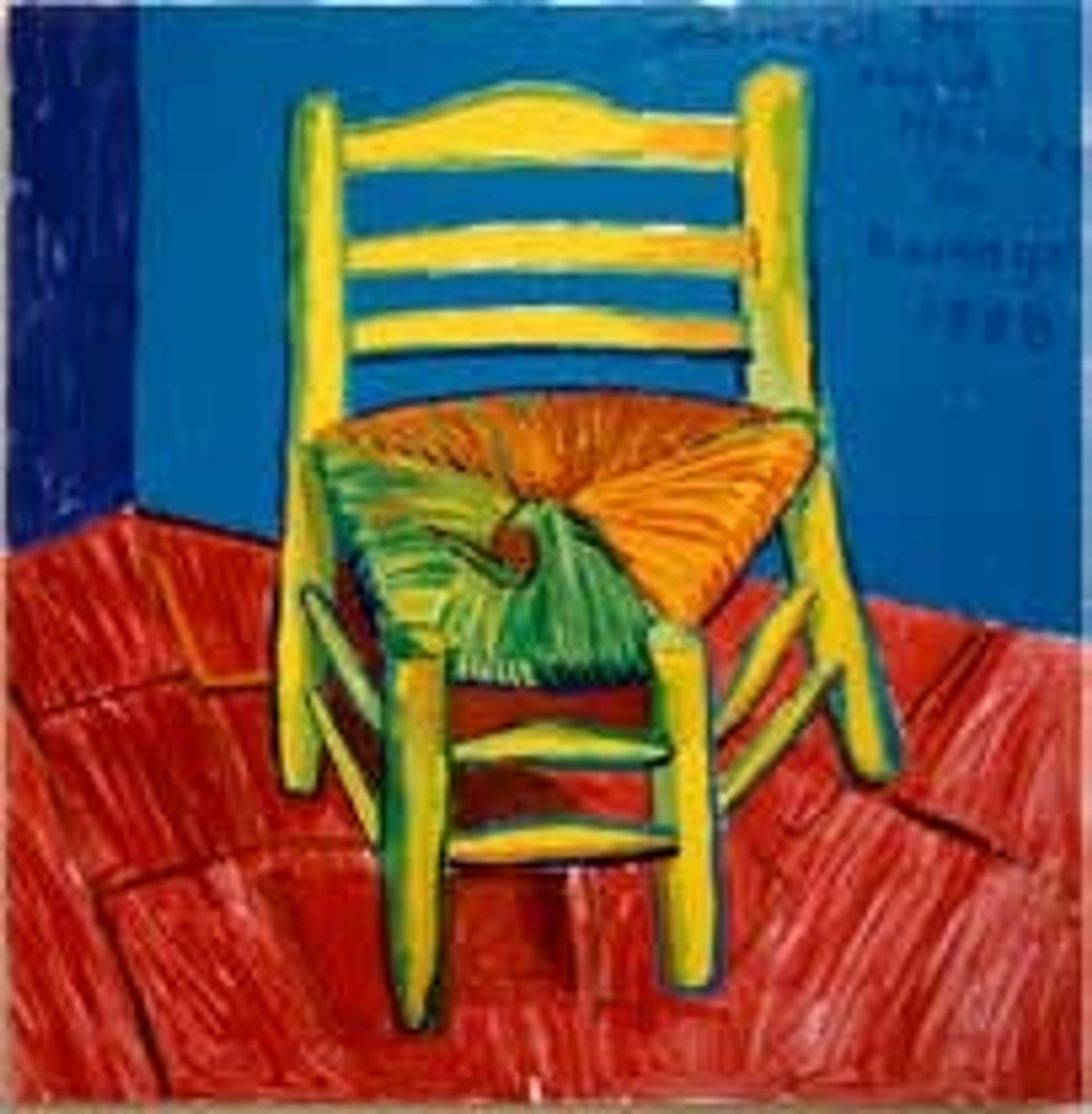Martin Bailey, our correspondent and a Van Gogh specialist, was invited to interview David Hockney for the catalogue of an exhibition at the Fondation Vincent van Gogh Arles. The show David Hockney “The Arrival of Spring” opens on 11 October. In the interview Hockney talks in considerable detail about his love for Van Gogh. We reproduce excerpts from the interview.
Martin Bailey Let’s begin by looking at three paintings done in Arles, when Van Gogh’s creativity was at its height. The first is The Yellow House, depicting the building with green shutters where he lived and worked. Sadly, it was bombed during the Second World War and later demolished. The painting temporarily came back to Arles in 2014, when it was loaned for the inauguration of the Fondation Vincent van Gogh Arles’s new building. What does the picture say to you?

David Hockney It’s a great painting. The colours are just marvellous — the blue sky and a yellow house. Yellow is not a colour that is used a great deal in painting, but Van Gogh certainly used it. When he did the picture, yellow must have been unbelievably bold. Sometimes one is not sure whether yellow is brighter than white or not. If you put yellow next to white, sometimes you think white is the brightest colour, but sometimes it is yellow. It was in the Yellow House that Van Gogh installed gas lighting, which was then the high-tech, new thing. He was using the latest technology to help to paint his pictures. He never wanted to stop working; gas lighting enabled him to paint at night. The gaslight would have been yellow. I remember my grandmother had only gaslight — there was no electricity in the house. It gave a slightly greenyyellowy look. When I was very young, I used to think her house was too dark and people looked green; my grandmother looked green and old. We all see colour differently, everybody does. I don’t know how I see colour, but I see it, and I like it. I suppose
I exaggerate it a bit.
MB The next painting I want us to look at goes inside the Yellow House. How do you react to The Bedroom?

DH The room appears very comfortable. If you were shown it today, you would think it would be a very nice place to stay in. This is a very attractive room.
MB I assume it never looked as tidy as this when Van Gogh was sleeping there. He was very bad at housekeeping, and there were probably clothes all over the place.
DH I am also a slob. I leave things around on the floor, because I know where they are. If you were shown this room to stay in during a visit to Arles today, it would be lovely.
MB A lot of people comment about the crazy perspective in The Bedroom. This is partly because the room is not rectangular — it actually had a sloping wall at the far end, where it faced Place Lamartine.
DH The picture looks right to me. Van Gogh is looking around, he is looking over here, and over there. Perspective is all to one vanishing point. It’s an optical thing. There are no shadows in The Bedroom. A lot of art historians don’t realise that traditional Chinese, Indian, Persian and Japanese art never included shadows. Van Gogh had seen Japanese prints. European art is the only art that has shadows. The Musée d’Orsay in Paris is a museum of the nineteenth century. There you see that when that century began there were lots of shadows, but when it ended there were not many. Colour had become a much bigger thing by the end of the nineteenth century.
MB Van Gogh’s bedroom had two chairs, so let’s move on to the third painting, Van Gogh’s Chair. This is in the National Gallery in London, so you must know it well.

DH The perspective is terrific. It’s a very personal view. You couldn’t take a photograph like this. I’ve always loved this painting. Whenever my father came to London, he always wanted to see Van Gogh’s Chair. He thought it was marvellous.
MB What makes it such a personal painting is his trusty pipe and tobacco wrapped in paper on the chair. It’s like a mini still life. You painted your own version of this subject, Vincent’s, Chair and Pipe, which belongs to the Fondation. This was for an exhibition to mark the centenary of Van Gogh’s arrival in Arles in 1888. Many leading contemporary artists donated works inspired by him.

DH I painted my version with reverse perspective. You see this side and then that side, so you are moving. I’ve always loved chairs. They have arms and legs, like people.
MB Van Gogh’s has no arms, but of course he also painted Gauguin’s Chair, which looks much more comfortable and does have them.
DH There is a presence in the two paintings — Van Gogh and Gauguin. They are not just empty chairs.
MB How much of an influence has Van Gogh been on you? I assume he is among your top ten greatest artists.
DH He is up there in my top five. I saw my first Van Gogh exhibition in Manchester in 1956, when I was at the Bradford School of Art. I didn’t know much about him, but I remember thinking that he must have been quite a rich artist because he could use two whole tubes of blue to paint the sky.
Not even our teacher at art school could afford that.
MB That was because his brother Theo generously sent him supplies and money from Paris.
DH He was obsessed with painting, but not with anything else. Gauguin went to the brothel, but Van Gogh was not that interested. Painting was his life; he had to do it. The last three years of his life are probably the most documented of any artist ever (maybe also Picasso, because he was famous for so long). Almost everything he did is recorded. During that period he produced paintings, drawings and letters. What time was there left for anything else but sleep?
MB I’ve got a special interest in the Sunflowers, having written a book about them. What do these works mean to you?
DH Once again, the yellow is striking — and the perspective. Cézanne was one of the first artists to paint still lifes seen from two viewpoints. Van Gogh did this too. Until then artists had tried to get perfect perspective with one eye. You can alter perspective.
MB You stress that one of Van Gogh’s greatest skills was to see.
DH How do we see the world? How do we look at the world? When you teach drawing, you are just teaching people to look. Van Gogh was a great, great looker. He looked at something and just painted it. What he saw made the world very exciting. Well, it is exciting. But if you look at it in another way, it can appear miserable.
MB Van Gogh certainly had his problems, although most of his paintings are optimistic.
DH The world is colourful. It is beautiful, I think. Nature is great. Van Gogh worshipped nature. He is a very, very great artist. I’ve always thought so. I think the public thinks so. It isn’t just that he cut off his ear. He might have been miserable, but that doesn’t show in his work. There are always things that will try to pull you down. But we should be joyful in looking at the world.
• David Hockney: The Arrival of Spring”, Fondation Vincent van Gogh Arles, 11 October-10 January 2016. The bilingual French-English catalogue, with the full interview, is published at €28. Martin Bailey is the author of “The Sunflowers are Mine: The Story of Van Gogh’s Masterpiece” (Frances Lincoln, 2013).

